Motorcycle glove buying guide
Buying gloves is easy. You are looking for protection and comfort at the baseline plus any specific functional needs - warmth for winter and waterproofing for the monsoon etc. Here's how to choose a good glove.

1. What is it made of
Leather is usually the best material when it comes to protection. Perforated leather in gloves is rare but at speed, the holes do provide some ventilation. Of late, there are a lot of textile or mesh and leather gloves that are great for light duty work - street and highway riding. Waterproof gloves do come in leather as well, but in my experience, textile waterproof gloves feel better once wet.
2. What is the armour made of
 Most gloves now feature this kind of composite/Kevlar/carbon-fibre moulded knuckle protectors. Street gloves offer foam armour over the knuckles while race gloves can offer hard protectors for the same
Most gloves now feature this kind of composite/Kevlar/carbon-fibre moulded knuckle protectors. Street gloves offer foam armour over the knuckles while race gloves can offer hard protectors for the same
There's a lot of thermoplastic armour and there is nothing wrong with that. Discount PVC patches (usually on cheaper gloves over finger joints) as protection - they're not. Top gloves come with Kevlar or other composite materials. Normally a knuckle protector is the baseline but as you go up the ladder, you get protectors on the joints - pay particular attention to the thumb, it's where the cost cutting usually shows up. Really good gloves also add a protector or slider over the scaphoid to allow the hands to keep sliding (less damage) rather than catching and flipping (more damage). There should be extra leather across the heel of the palm and across the top of the palm as well. These are the high impact (in a crash) and high wear (in use) areas of the glove.
3. The fit
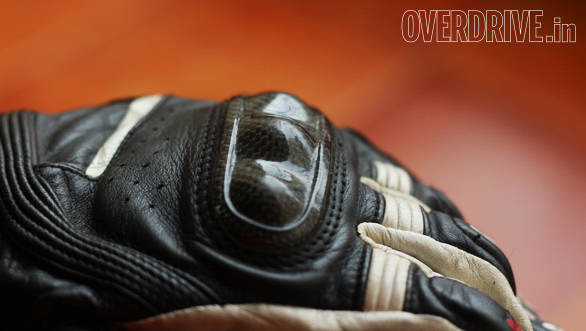 Note expansion joints on the fingers - it helps the fingers fall naturally on the levers
Note expansion joints on the fingers - it helps the fingers fall naturally on the levers
Gloves should be as tight as you like without making movement difficult. I like to make a tight fist. The leather should not bunch up in the palm and the fist should be possible to make but not easy. Impossible means you need to go a size up and easy means when the glove stretches in use, it will become too loose. The first rides can be a bit stiff feeling with new gloves but they should be loose enough so that the seams do not catch between your fingertips and the nail. External finger seams are a great idea even if they look untidy sometimes. Then check the wrist closure. The wrist closure should actually sit on the wrist - whether it's just elastic or a velcro strap. If it's too far below the wrist then the glove is too long.
4. The cuff
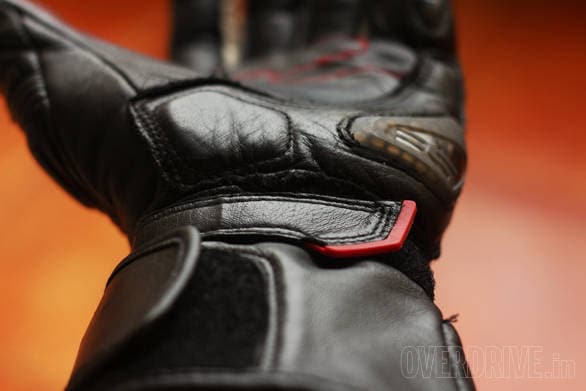 These gloves have a two-stage retention system - a velcro band (with the red tab) as well as a bigger velcro flap
These gloves have a two-stage retention system - a velcro band (with the red tab) as well as a bigger velcro flap
Motorcycle gloves typically come in three sizes. The short cuffs are said to be the most convenient, the mid-cuff is convenient and gives more protection while full cuff or long gauntlet gloves have the most protection and the least convenience. The reason is that the shorter the cuff, the lesser the overlap between the jacket sleeve and the end of the glove. Which means if either or both get displaced in a crash, your skin will have to absorb the gap. I personally do not wear short cuff gloves at all by policy and notice no inconvenient but as the cool people in the Interweb like to say, YMMV.
5. Other features
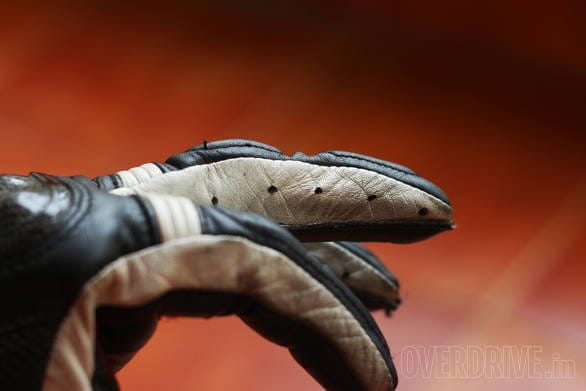 The ventilation holes on the sides of the finger don't really make too much of a difference
The ventilation holes on the sides of the finger don't really make too much of a difference
If you need it, look for ventilation on top of the glove. Ventilation between the fingers doesn't typically work too well while ventilation in the palm area is almost entirely besides the point.
6. Waterproofing
 Note the double layer of leather on the palm. This one is a waterproof glove so it uses a special kind of leather
Note the double layer of leather on the palm. This one is a waterproof glove so it uses a special kind of leather
Typically, waterproof gloves tend to be super warm because it appears that India is a country where it rains in relatively warm weather. This, as you can imagine, makes finding reasonably lightweight waterproof gloves very hard to find. Look for membranes - GoreTex is the most famous - for waterproofing but be aware that membrane-equipped gloves tend to be hard to get on and off, especially after the outer layers get soaked. WP gloves also come in leather construction but we prefer textiles because they leak less colour and feel less limp once wet. Remember that nothing is waterproof forever.
7. Insulation
For less bulky insulation, see x-torque.in for silk and fleece glove liners - they're quite inexpensive and from what we hear, very effective. Heavy winter gloves tend to have fleece inners, windproof membranes or a label that says Thinsulate. All of these are quite effective but remember that these heavy gloves reduce the feel from the bike a bit.
8. Longevity
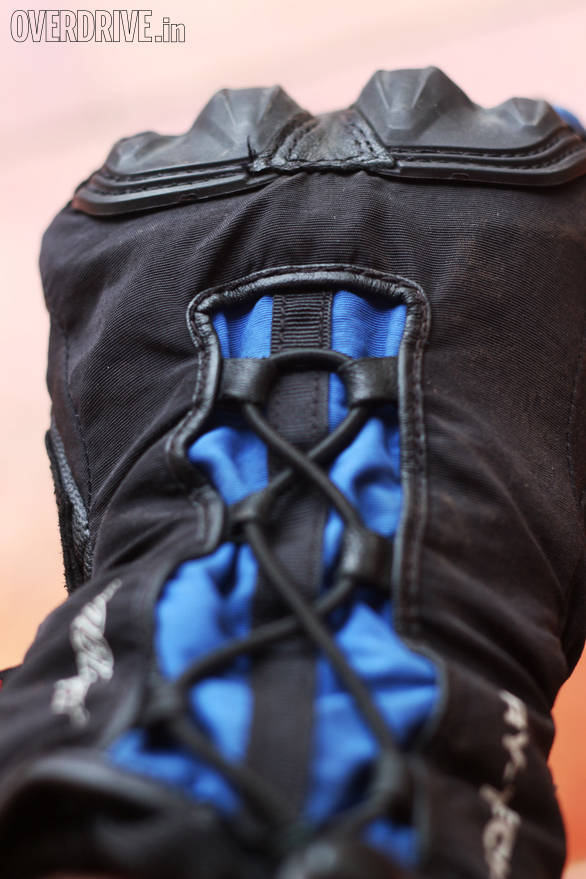 This lacing system seems like a good idea to prevent water from entering this waterproof glove. But in practice it actually pulls the cuff up and makes the glove less effective
This lacing system seems like a good idea to prevent water from entering this waterproof glove. But in practice it actually pulls the cuff up and makes the glove less effective
This depends on the useage but I tend to get a year out of a normal leather glove before holing one finger or another. That's about 35-40,000 kilometres though I tend to have waterproof gloves for the rains. Race gloves may be a great idea for feel but they are expensive and will also hole much faster because they're designed for feel and protection more than protection and longevity.
9. What's a good budget?
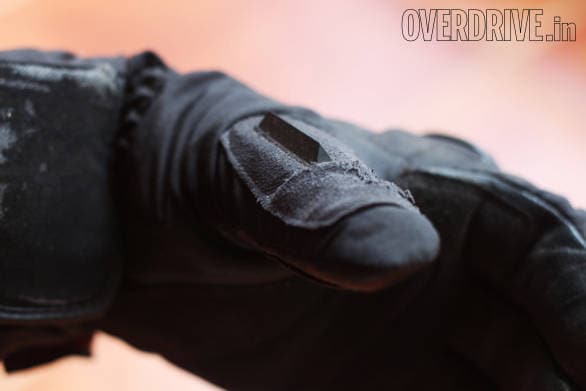 Waterproof gloves should offer this simple rubber blade. It works brilliantly in the rain - you can use it like a wiper to take some of the muck off your visor
Waterproof gloves should offer this simple rubber blade. It works brilliantly in the rain - you can use it like a wiper to take some of the muck off your visor
See our separate story on cheap motorcycle gloves in India. We found that Rs 6,500 to 7,000 is the minimum required to get a reasonably good all-round glove, though prices start as low as Rs 1,500.
You can check out our guide to buying motorcycle jackets too.
Also see:-














